When and how to transplant hyacinths correctly?
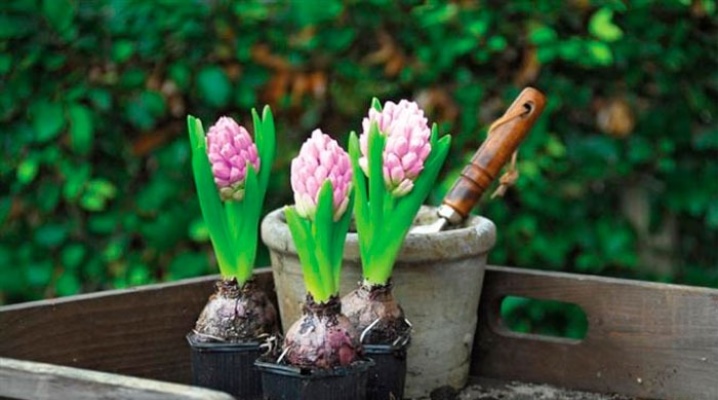
Transplanting is one of the most important stages of hyacinth care. The specificity of the procedure depends on where the plant is grown - at home or outdoors. The transplanted bulb is gaining strength and is ready to please the grower with a new lush flowering. Its abundance and beauty is determined by how correctly the transplant is performed.

The need for a procedure
The flowering period is a rather difficult time in the life of a plant. The culture is depleted, loses strength, health, energy, and if you leave the bulb in the same place, then you can not expect good flowering.
The transplant allows the plant to stock up on strength, it stimulates the laying of a full-fledged flower bud. And also "moving" significantly reduces the likelihood of the spread of diseases that are provoked by bacteria accumulated in the soil.
You can do without digging out the bulbs if a picky variety is grown.
In order for a flower to form a high-quality healthy rudiment of a new peduncle, the culture needs warmth. However, the temperature in the soil is usually low, and if the summers are damp, the bulbs can rot in the moist soil. And even favorable growing conditions will not be able to ensure strong flowering if the bulbs lie in the ground all summer.
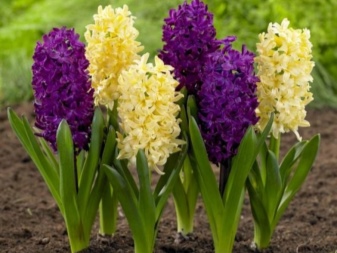
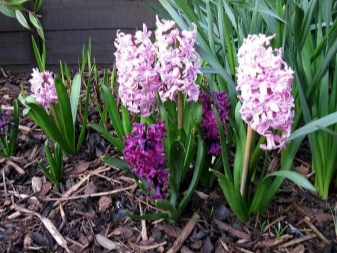
Timing
Hyacinth blooms in April - early May, and therefore transplantation to the site is not performed in the spring. If the grower wants the culture to bloom in the year of planting, then stressful conditions must be created for it that motivate the tying of a flower bud, for example, send the planting material to the freezer an hour before planting.
The most favorable time for transplanting is late September - early October. If you transplant flowers ahead of time, they can freeze; a slight delay will not allow the bulb to adapt to new conditions before winter, which can also lead to the death of the plant.
The bulbs are dug out only at the end of flowering - after 1.5-2 months. Make sure the leaves are dead and the tips are wilted. Digging usually occurs in June - early July.
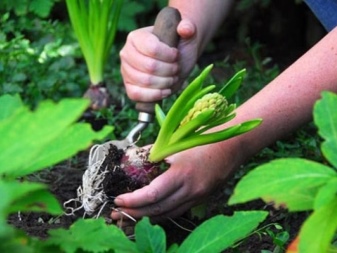
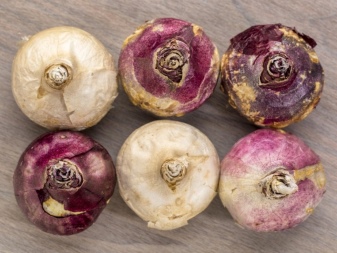
Preparation
To transplant a flower, it is important to properly prepare the soil. It should be neutral or slightly acidic soil. The selected area should be well lit by the sun, but protected from wind and drafts. Before planting, it is important to dig up the soil well, removing the roots of the weeds. It is advisable to supplement the soil composition with organic matter, but not fresh, otherwise it will provoke damage and death of fragile onions. If necessary, it is recommended to add dolomite flour or lime, as well as a complex mineral composition.
The culture does not withstand waterlogging, therefore, the selected area must be removed from the flow of groundwater. If necessary, the flower bed should be raised as high as possible from the possible stagnation of rain and melt water. If a place is provided for planting where excess moisture is not excluded, then it is important to equip high-quality drainage during transplantation.
It is not recommended to plant hyacinths near trees and bushes, since competition for moisture and nutrients in this case cannot be avoided, and as a result, the culture will not receive a sufficient amount of the necessary components. The site for planting should be prepared in advance - in August or several weeks before planting.
The bulbs to be transplanted are carefully removed from the ground, cleaned of soil and dried. As a preventive measure, gardeners recommend treating the onions with a weak solution of potassium permanganate or fungicide.
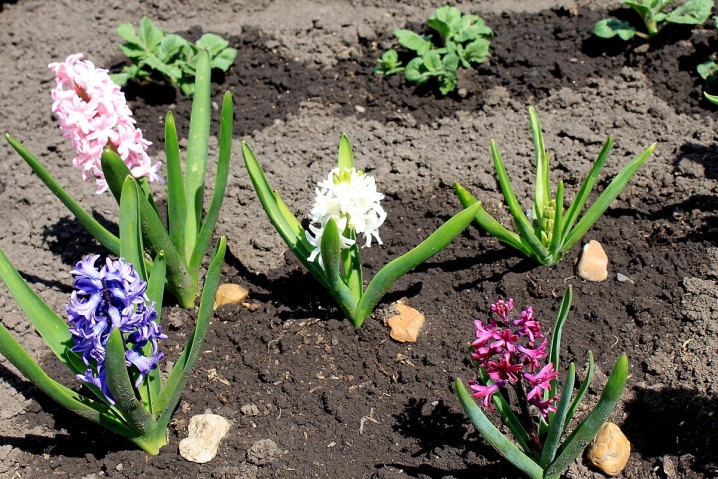
Transplant scheme
Consider the process of planting bulbs in the garden.
- Dig the planting hole 2 weeks before the expected planting date. During this time, the earth will have time to settle.
- Add 30-50 g of compound fertilizer to the bottom.
- Place a trellis container with a fertile mixture in a layer of 4 cm.
- The next layer is wood ash with a layer of 2-3 cm.
- Pour river sand under the place of each onion and deepen the planting material into it.
- Dig on top with sand with a layer of 1-2 cm. This procedure will reduce the likelihood of decay with excessive moisture.
- Pour a mixture made from turf and peat on top of the soil.
- Mulch the planting site with sawdust or dry foliage.
- Moisten the area moderately.
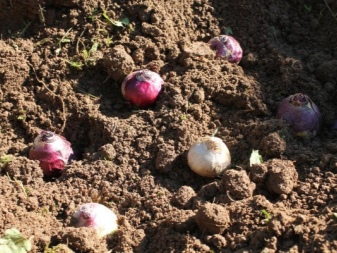
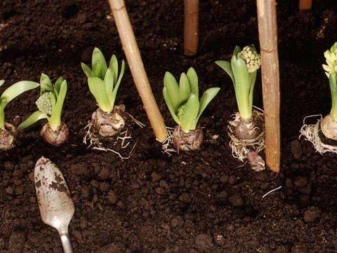
If a transplant is planned in room conditions, then the procedure can be carried out in early spring or autumn. For this purpose, well-developed and luxuriantly blooming specimens are chosen as the "parent". Follow these steps:
- find a warm and sunny place in the southern part of the house;
- 2-3 weeks before planting, prepare the soil mixture, you can supplement it with magnesium sulfate and potassium, humus, peat;
- prepare a deep and wide container with a diameter of 5-7 cm more planting material;
- equip a drainage system at the bottom;
- plant the onion in the prepared mixture.
If a transplant is required from a small container into a voluminous pot, then the procedure is performed using the method of careful transshipment.

Further care
After transplanting to another place, the plant in spring will give you the opportunity to admire the bright flowering, but for this it is important to properly care for the transplanted flower. Care includes several points.
Lighting
If the flower is grown at home, then in winter it needs artificial lighting. In addition, for uniform development, the pot is turned to the sun in different directions throughout the day.
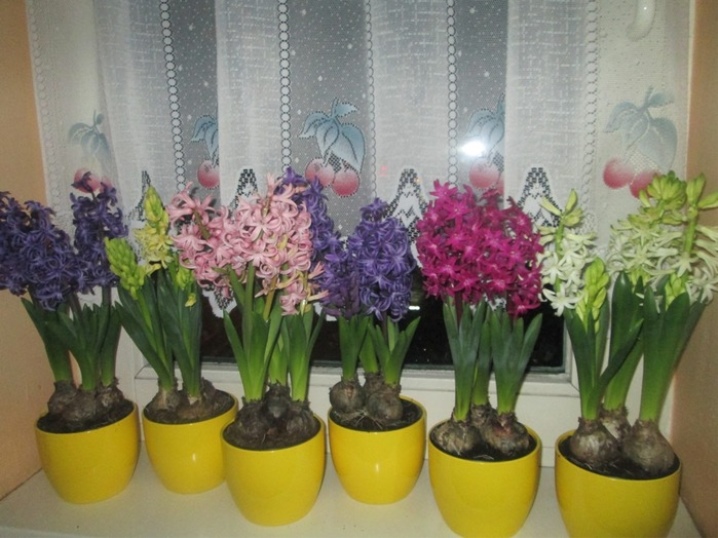
Watering
When transplanting into a pot, it is important not to allow the substrate to completely dry out. A plant that is grown in a summer cottage usually feeds on natural moisture from precipitation, but in dry times it needs to be watered. For 1 m2, it is enough to add 7-10 liters of water, the frequency of watering is once every 3-4 days. After each moistening, it is advisable to loosen the soil. When flowering stops, the flower bed is watered for a couple of weeks, after which this procedure is stopped so that the bulbs dry underground before digging up.

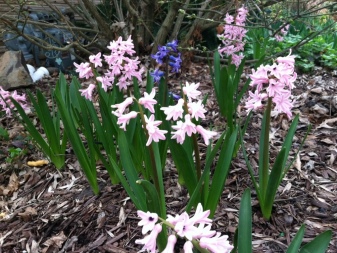
Top dressing
The plant needs fertilization twice a year. The first top dressing is applied in early spring, when the first shoots hatch. During this period, it is recommended to use ammonium nitrate. The second time additional nutrition is applied before flowering - at this time superphosphates and potassium sulfate are more suitable. For 1 m2, 1 tbsp is enough. l. mixtures. Fertilizer is scattered on the ground, slightly "powdered" with soil and moistened.

Preparing for winter
Bulbs transplanted in the fall need to be insulated. A thick layer of mulch can provide protection from frost. It is better to use dry foliage, sawdust, spruce branches, peat with humus for this. The recommended layer thickness is 20 cm. During the winter months, the planting site is regularly covered with snow - it will also provide warmth to the bulbs.
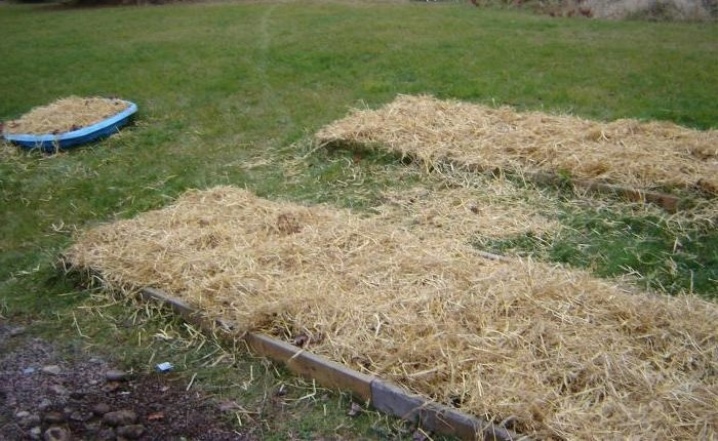
Diseases and pests
If transplanted incorrectly or under unfavorable growing conditions, hyacinths become very vulnerable to diseases and pests. So, when the soil is waterlogged, the plant is exposed to fungal infections. And the ailment can be caused by poor preparation of the bulbs for transplantation... For example, a planting material that has not been previously treated with a solution of potassium permanganate, fungicide, or a phosphorus-containing preparation has a significantly weaker immunity.
In order to prevent the appearance of bacterial rot, it is recommended to treat the soil with 5% formalin or bleach before planting.
Some growers are faced with such a problem as the loss of inflorescences. Do not be afraid and run after fungicides, such a condition is not a disease, but a phenomenon provoked by strong root pressure. This is possible if the bulbs are planted too early, if they are poorly dried, or if they are planted in a poorly drained area. To fix the problem, it is worth changing the conditions of detention.
Of the insects, the plant most often turns out to be affected by aphids, flower flies, thrips, and onion mites. Insecticides, for example, "Aktara", "Medvetoks", "Fitoverm", will help to fight pests.
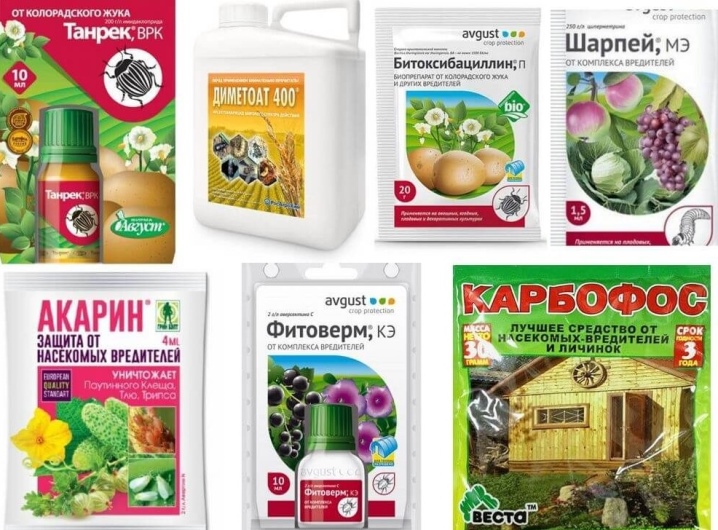
Next, watch a video with tips on when and how best to transplant hyacinths in the garden.







































































































The comment was sent successfully.